Wikipedia
Resultados de la búsqueda
domingo, 31 de enero de 2016
Abba Ptachya Lerner ( 1903-1982 )
Abba Ptachya Lerner nació en Bessaravia, Rusia, pero sus padres emigraron a Inglaterra cuando él era muy pequeño. Trabajó como maquinista, sombrerero, profesor de hebreo y empresario. En su juventud mantuvo ideas socialistas y estuvo muy próximo a los fabianos.
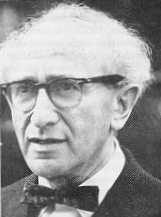 Con 26 años ingresó como estudiante en la London School of Economics. Fue un estudiante brillante, que obtuvo premios y becas y, antes de graduarse, escribió y publicó articulos innovadores y reconocidos por sus profesores.
Con 26 años ingresó como estudiante en la London School of Economics. Fue un estudiante brillante, que obtuvo premios y becas y, antes de graduarse, escribió y publicó articulos innovadores y reconocidos por sus profesores.
En 1933 participó en la fundación y coeditó la prestigiosa revista Review of Economic Studies. En 1935 comenzó su actividad docente en la London School of Economics. En 1939 se traslada a Estados Unidos donde residirá el resto de su vida ejerciendo la docencia en un gran número de universidades: Columbia, Virginia, Kansas City, Amherst, The New School for Social Research, Roosvelt, John Hopkins, Michigan State y la Universidad de California en Berkeley.
Sus primeras publicaciones están en el campo de la teoría del comercio internacional. En 1934 establece como criterio paretiano la igualdad del precio al coste marginal y propone como sistema de medida del poder o grado de monopolio la diferencia entre esas dos variables. Participa junto con Oskar Lange y frente a Ludwig von Mises en la "polémica sobre el cálculo socialista".
Su obra magna fue Economics of Control en la que analiza, argumenta y justifica la utilización por los gobiernos de las "finanzas funcionales", es decir, la utilización de las finanzas públicas para conseguir una situación de pleno empleo con estabilidad de precios. Los problemas del control de la inflación en las situaciones de alto empleo le ocuparon trabajos posteriores, proponiendo la creación de un mercado de bonos que autorizarían a sus propietarios a realizar subidas de precios.
Ver, en este mismo CD-ROM o sitio web
Abba Ptachya Lerner, Ahorro e inversión: definiciones, supuestos y objetivos (PDF)
OBRAS
- "The Diagrammatical Representation of Cost Conditions in International Trade", 1932, Economica.
- "The Diagrammatical Representation of Elasticity of Demand", 1933, RES.
- "The Diagrammatical Representation of Elasticity of Substitution", 1933, RES.
- "The Diagrammatical Representation of Demand Conditions in International Trade", 1934, Economica.
- "The Concept of Monopoly and the Measurement of Monopoly Power", 1934, RES.
- "Economic Theory and Socialist Economy", 1934, RES.
- "Economic Theory and Socialist Economy: Rejoinder", 1935, RES.
- "The Symmetry Between Import and Export Taxes", 1936, Economica.
- "Mr Keynes's General Theory", 1936, International Labor Review.
- "A Note on Socialist Economies", 1936, RES
- "Capital, Investment and Interest", 1936-7, Proceedings of Manchester Statistical Society
- "Statics and Dynamics in Socialist Economics", 1937, EJ
- "Theory and Practice of Socialist Economics", 1938, RES
- "Alternative Formulations of the Theory of Interest", 1938, EJ.
- "Saving Equals Investment", 1938, QJE.
- "Saving and Investment: Definitions, assumptions and objectives", 1939, QJE.
- "From Vulgar Political Economy to Vulgar Marxism", 1939, JPE.
- "The Relation of Wage Policies and Price Policies", 1939, AER
- "Some Swedish Stepping Stones in Economic Theory", 1940, Canadian JE .
- "The Economic Steering Wheel", 1941, University Review, Kansas
- "Functional Finance and the Federal Debt", 1943, Social Research.
- "User Cost and Prime User Cost", 1943, AER
- The Economics of Control: Principles of welfare economics, 1944.
- "Interest Theory: Supply and demand for loans or supply and demand for cash?", 1944, RES.
- "Strengthening the Economic Foundations of Democracy", with Oskar Lange, 1944,American Way of Business.
- "Money", 1946, Encyclopaedia Britannica
- "Money as a Creature of the State", 1947, AER.
- "The Burden of the National Debt", 1948, in Income, Employment and Public Policy
- "The Inflationary Process: Some theoretical aspects", 1949, REStat.
- "Fighting Inflation", 1951, REStat
- The Economics of Employment, 1951.
- "Factor Prices and International Trade", 1952, Economica.
- "The Essential Properties of Interest and Money", 1952, QJE.
- "On the Marginal Product of Capital and the Marginal Efficieny of Investment", 1953, JPE.
- ""Consumption-Loan Interest and Money", 1959, JPE
- "On Generalizing the General Theory", 1960, AER.
- "The Burden of the Debt", 1961, REStat.
- "A Note on the Rate of Interest and the Value of Assets", 1961, EJ.
- "The Analysis of Demand", 1962, AER.
- "Macro-Economics and Micro-Economics", 1962, in Nagel, Suppes and Tarski, editors, Logic, Methodology and Philosophy of Science
- "Consumer's Surplus and Micro-Macro", 1963, JPE.
- "Keynesian Economics in the Sixties", 1963, in Lekachman, editor, Keynes' General Theory.
- "On Some Recent Developments in Capital Theory", 1965, AER.
- "Employment Theory and Employment Policy", 1967, AER.
- "The Economist's Can-Opener", 1968, Western EJ.
- "On Optimal Taxes with an Untaxable Sector", 1970, AER.
- Flation: not inflation of prices, not deflation of jobs., 1972.
- ""Money, Debt and Wealth", 1973, in W. Sellekaerts, editor, Econometrics and Economic Theory
- "From the Treatise on Money to the General Theory", 1974, JEL.
- "Principles of Efficient Economic Policy", 1975, in Ben- Shabar, Economics of Efficiency and Growth.
- "Marginal Cost Pricing in the 1930s", 1977, AER.
- "From Pre-Keynes to Post-Keynes", 1977, Social Research.
- "Utilitarian Marginalism", 1978, Eastern EJ.
- "The Scramble for Keynes' Mantle", 1978, JPKE.
- "On Keynes, Policy and Theory: A grumble", 1979, Social Research.
- "A Keynesian on Hayek", 1980, Challenge.
- MAP: A Market Anti-Inflation Plan, with D.Colander, 1980.
- "Paleo-Austrian Capital Theory", 1983, in Colander, editor, Selected Economic Writings of Abba Lerner
John R. Hicks ( 1904-1989 )
Premio Nobel  1972
1972
 1972
1972
Sir John Richard Hicks, economista británico, obtuvo el Premio Nobel de Economía en 1972, compartido con K.J. Arrow, "por sus contribuciones pioneras a la teoría del equilibrio económico general y la teoría del bienestar"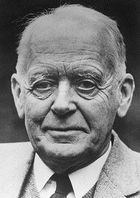 .
.
 .
.
Hicks es una de las figuras más destacadas del pensamiento económico del siglo XX. Estuvo casado con Ursula Webb, hija de los fabianos Beatrice y Sidney Webb.
Licenciado en Oxford, fue profesor en la London School of Economics (1926-1935) y posteriormente en las Universidades de Cambridge, Manchester y Oxford.
Seguidor de Walras y Pareto, aplica la técnica de lascurvas de indiferencia a los bienes, reconvirtiendo así la teoría de la demanda.
Quizá su aportación más popular fue el artículo de 1937 publicado en la revistaEconometrica: "Mr Keynes and the Classics: A suggested interpretation". En él realizó un esfuerzo de conciliación del pensamiento de Keynes, cuya obra fundamental se acababa de publicar, con los modelos clásicos de equilibrio. De ello resultó un modelo, posteriormente conocido como el modelo Hicks-Hansen o curvas IS-LM.
Ver también
- Félix Blanco, Alfredo
OBRAS
- "Edgeworth, Marshall and the Indeterminateness of Wages", 1930, EJ.
- "Theory of Uncertainty and Profit", 1931, Economica.
- The Theory of Wages, 1932.
- "Marginal Productivity and the Principle of Variation", 1932, Economica
- "Equilibrium and the Cycle", 1933, ZfN.
- "A Reconsideration of the Theory of Value", con R.G.D. Allen, Economica.
- "Leon Walras", 1934, Econometrica.
- "A Note on the Elasticity of Supply", 1934, RES.
- "Review of Myrdal, 1934, Economica.
- "Review of Dupuit", 1935, Economica.
- "The Theory of Monopoly", 1935, Econometrica.
- "Wages and Interest: A dynamic problem", 1935, EJ.
- "A Suggestion for Simplifying the Theory of Money", 1935, Economica.
- "Mr Keynes's Theory of Employment", 1936, EJ.
- "Distribution and Economic Progress: a revised version", 1936, RES.
- "Mr Keynes and the Classics: A suggested simplification", 1937, Econometrica.
- "The Foundations of Welfare Economics", 1939, EJ.
- Value and Capital: An inquiry into some fundamental principles of economic theory , 1939.
- "Mr Hawtrey on Bank Rate and the Long Term Rate of Interest", 1939, Manchester School.
- "Public Finance in National Income" con Ursula K. Hicks, 1939, RES.
- "The Valuation of Social Income", 1940, Economica.
- Taxation and War Wealth, with U.K.Hicks and L. Rostas, 1941.
- "The Rehabilitation of Consumers' Surplus", 1941, RES.
- "Saving and the Rate of Interest in War-Time", 1941, Manchester School.
- "Education in Economics", 1941, Bulletin MSS.
- "Consumers' Surplus and Index-Numbers", 1942, RES.
- "The Monetary Theory of D.H.Robertson", 1942, Economica.
- The Social Framework: An introduction to economics, 1942.
- "Maintaining Capital Intact", 1942, Economica.
- "The Beveridge Plan and Local Government Finance", with U.K. Hicks, 1943, Bulletin MSS.
- "The Four Consumer's Surpus", 1944, RES.
- "Recent Contributions to General Equilibrum Economics", 1945, Economica.
- "Theorie de Keynes après neuf ans", 1945, Revue d'Economie Politique.
- "The Generalised Theory of Consumer's Surplus", 1946, RES.
- "World Recovery After War", 1947, EJ.
- "Full Employment in a Period of Reconstruction", 1947, Nationalokonomisk Tidsskrift.
- "The Empty Economy", 1947, Lloyds BR.
- The Problem of Budgetary Reform, 1949.
- "Devaluation and World Trade", 1949, Three Banks Review.
- "Mr Harrod's Dynamic Economics", 1949, Economica.
- A Contribution to the Theory of the Trade Cycle , 1950.
- "Free Trade and Modern Economics", 1951, Bulletin MSS.
- "Review of Menger", 1951, EJ.
- "The Long-Term Dollar Problem", 1953, Oxford EP.
- "The Process of Imperfect Competition", 1954, Oxford EP.
- A Revision of Demand Theory, 1956.
- "Methods of Dynamic Analysis", 1956, in 25 Economic Essays in Honor of Erik Lindahl.
- "A Rehabilitation of `Classical' Economics? Review of Patinkin", 1957, EJ.
- "The Measurement of Real Income", 1958, Oxford EP.
- "A Value-and-Capital Growth Model", 1958, RES.
- "Future of the Rate of Interest", 1958, Bulletin MSS.
- "World Inflation", 1958, Irish Bank Review.
- Essays in World Economics, 1959.
- "Thoughts on the Theory of Capital: The Corfu Conference", 1960, Oxford EP.
- "Linear Theory", 1960, EJ.
- "Measurement of Capital in Relation to the Measurement of Other Economic Aggregates", 1961, in Lutz and Hague, editors, Theory of Capital.
- "Pareto Revealed", 1961, Economica.
- "Prices and the Turnpike: Story of a Mare's Nest, 1961, RES.
- "Liquidity", 1962, EJ
- Capital and Growth, 1965.
- "Growth and Anti-Growth", 1966, Oxford EP.
- Critical Essays in Monetary Theory , 1967.
- "Measurement of Capital - in Practice", 1969, Bulletin of ISI.
- "Autonomists, Hawtreyans and Keynesians", 1969, JMCB.
- A Theory of Economic History, 1969.
- "Direct and Indirect Additivity", 1969, Econometrica.
- "A Neo-Austrian Growth Theory", 1970, EJ.
- "Elasticity of Substitution Again: Substitutes and complements", 1970, Oxford EP.
- "Review of Friedman", 1970, EJ.
- "The Austrian Theory of Capital and its Rebirth in Modern Economics", 1973, ZfN.
- "Ricardo's Theory of Distribution", 1972, in Preston and Corry, editors, Essays in Honor of Lord Robbins.
- Capital and Time: A Neo-Austrian theory , 1973.
- Editor, Carl Menger and the Austrian School of Economics, with W. Weber, 1973.
- "Recollections and Documents", 1973, Economica.
- "The Mainspring of Economic Growth" , 1973, Swedish JE. (repr. 1981, AER)
- "On the Measurement of Capital", 1973, Economic Science.
- The Crisis in Keynesian Economics, 1974.
- "Real and Monetary Factors in Economic Fluctuations", 1974, Scottish JPE.
- "Industrialism", 1974, International Affairs.
- "Capital Controversies: Ancient and Modern", 1974, AER.
- "The Scope and Status of Welfare Economics", 1975, Oxford EP.
- "What is Wrong with Monetarism", 1975, Lloyds BR.
- "The Quest for Monetary Stability", 1975, South African JE.
- "Some Questions of Time in Economics", 1976, en Tang et al, editors, Evolution, Welfare and Time in Economics: Essays in honor of Nicholas Georgescu-Roegen.
- Economic Perspectives, 1976.
- "Must Stimulating Demand Stimulate Inflation?", 1976, Econ Record.
- "`Revolutions' in Economics", 1976, in Latsis, editor, Method and Appraisal in Economics.
- "The Little that is Right with Monetarism", 1976, Lloyds BR.
- Economic Perspectives, 1977.
- "Mr.Ricardo and the Moderns", with S. Hollander, 1977, QJE.
- Causality in Economics, 1979.
- "The Formation of an Economist", 1979, BNLQR.
- "Is Interest the Price of a Factor of Production?", 1979, en Rizzo, editor, Time, Uncertainty and Disequilibrium.
- "IS-LM: An explanation", 1980, JPKE.
- Wealth and Welfare: Vol I. of Collected Essays in Economic Theory, 1981.
- Money, Interest and Wages: Vol. II of Collected Essays in Economic Theory, 1982.
- Classics and Moderns: Vol. III of Collected Essays in Economic Theory, 1983.
- "The New Causality: An explanation", 1984, Oxford EP.
- "Is Economics a Science?", 1984, Interdisciplinary Science Review.
- "Francis Ysidro Edgeworth", 1984, in Murphy, editor, Economists and the Irish Economy.
- Methods of Dynamic Economics, 1985.
- "Sraffa and Ricardo: A critical view", 1985, in Caravale, Legacy of Ricardo.
- "Loanable Funds and Liquidity Preference", 1986, Greek ER.
- "Rational Behavior: Observation or assumption?", 1986, in Kirzner, editor,Subjectivism, Intelligibility and Economic Understanding.
- "Towards a More General Theory", 1988, in Kohn and Tsiang, editor, Finance Constraints, Expectations and Macroeconomics
- "The Assumption of Constant Returns to Scale", 1989, Cambridge JE.
- A Market Theory of Money, 1989.
- "An Accountant Among Economists: Conversations with John Hicks", with A. Klamer, 1989, JEP.
- "Ricardo and Sraffa", 1990, in Bharadwaj and Schefold, eds., Essays on Piero Sraffa.
- "The Unification of Macro-Economics", 1990, EJ.
- "A Self-Survey", 1990, Greek ER.
- "The Swedish Influence on Value and Capital", 1991, in Jonung, editor, The Stockholm School of Economics Revisited.
Evsey D. Domar ( 1914-1997 )
Nacido en Lodz, ciudad polaca que en aquel momento pertenecía a Rusia. Fue educado en Manchuria de donde emigró a los Estados Unidos en 1936.
Se graduó (BA) en UCLA en 1939, obteniendo una maestría (MS) en la Universidad de Michigan en 1940 y su doctorado en Harvard en 1947. Fue profesor en el Carnegie Institute of Technologie, la Universidad de Chicago, la Universidad John Hopkins y, desde 1957 hasta el final de su vida, en el Massachussetts Institute of Technology.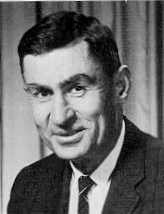

Perteneció a diversas organizaciones académicas como la American Academy of Arts and Sciences, laEconometric Society, y el Center for Advanced Study in the Behavioral Sciences. Estuvo en el comité ejecutivo de la American Economic Association 196265, de la que llegó a ser vicepresidente en 1970. También fue presidente de la Association for Comparative Economics. Domar trabajó también para la RAND Corp., la Ford Foundation, la Brookings Institution, la National Science Foundation, la Batelle Memorial Institute, y el Institute for Defense Analysis.
Evsey D. Domar fue un destacado keynesiano. Sus trabajos se localizan en tres campos: historia económica, economía comparativa y crecimiento económico. En 1946 adelantó la idea de que el crecimiento económico servía para aligerar el déficit y la deuda pública. Su mayor fama, sin embargo, se debe a ser considerado coautor, junto a Roy Harrod, del modelo de crecimiento Harrod-Domar, un modelo que contempla el equilibrio a largo plazo en términos keynesianos, aunque cada uno de ellos llegó de forma totalmente independiente. Entre sus alumnos en macroeconomía destacó R.W. Fogel, que obtuvo el premio Nobel de Economía en 1993.
Ver también
La generalización de la macrodinámica: el modelo de Harrod - Domar de Marleny Cardona Acevedo y otros
OBRAS
- "The Burden of the Debt and the National Income", 1944, AER.
- "Proportional Income Taxation and Risk-Taking", with R. Musgrave, 1944.
- "Capital Expansion, Rate of Growth and Employment", 1946, Econometrica.
- "Expansion and Employment", 1947, AER.
- "The Problem of Capital Accumulation", 1948, AER.
- "Capital Accumulation and the End of Prosperity", 1949, Proceedings ofInternat. Statistical Conference
- "The Effect of Foreign Investment on the Balance of Payments", 1950, AER.
- "A Theoretical Analysis of Economic Growth", 1952, AER.
- "Depreciation, Replacement and Growth", 1953, EJ.
- "The Case for Accelerated Depreciation", 1953, QJE.
- Essays in the Theory of Economic Growth, 1957.
- "On the Measurement of Technological Change", 1961, EJ.
- "The Soviet Collective Farm as a Producer Co-Operative", 1966, AER.
- "An Index-Number Tournament", 1967, QJE.
- "The Causes of Slavery or Serfdom: A hypothesis", 1970, Journal of Economic History.
- "On The Optimal Compensation of a Socialist Manager", 1974, QJE
Nicholas Kaldor ( 1908-1986 )
Nicholas Kaldor nació en Budapest. Estudió en el Model Gymnasium de Budapest y en la London School of Economics. Fue profesor en ésta (1932-1947) y, posteriormente, en el Kings College de Cambridge.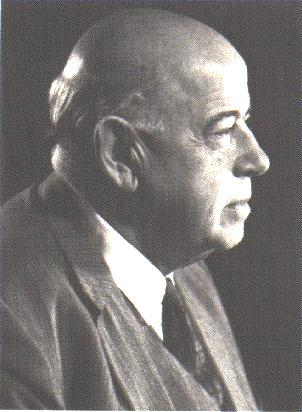

Socialdemócrata y keynesiano, se especializó en desarrollo económico, siendo asesor de varios países subdesarrollados. Fue también asesor económico del gobierno laborista y consejero del Tesoro.
Elaboró un modelo de crecimiento estable que complementaba el modelo de R.F. Harrod y E.D. Domar, conciliando la tasa de crecimiento "garantizado" con la tasa de crecimiento "natural".
Su teoría de la distribución supuso una superación del óptimo paretiano. Consideraba que si un cambio en la distribución de la renta permitía que los que se beneficiaban de él compensasen plenamente a los perjudicados, el resultado sería un aumento del producto y del bienestar general.
Ver, en este mismo sitio web
Las leyes del crecimiento económico de Kaldor
de Marleny Cardona Acevedo y otros
de Marleny Cardona Acevedo y otros
Texto en castellano
OBRAS
- "The Case Against Technical Progress", 1932, Economica
- "The Determinateness of Static Equilibrium", 1934, RES
- "The Equilibrium of the Firm", 1934, EJ
- "Market Imperfection and Excess Capacity", 1935, Economica
- "Pigou on Money Wages in Relation to Unemployment", 1937, EJ
- "Welfare Propositions in Economics", 1939, EJ
- "Speculation and Economic Stability", 1939, RES
- "Capital Intensity and the Trade Cycle", 1939, Economica
- "A Model of the Trade Cycle", 1940, EJ
- "Professor Hayek and the Concertina Effect", 1942, Economica
- "The Relation of Economic Growth and Cyclical Fluctuations", 1954 EJ
- An Expenditure Tax, 1955. Versión castellana Un impuesto al gasto, Ed. Fondo de Cultura Económica, México, 1960.
- "Alternative Theories of Distribution", 1956, RES
- "A Model of Economic Growth", 1957, EJ
- "Monetary Policy, Economic Stability, and Growth", 1958.
- "Economic Growth and the Problem of Inflation", 1959, Economica.
- "A Rejoinder to Mr. Atsumi and Professor Tobin", 1960, RES
- "Keynes's Theory of the Own-Rates of Interest", 1960, in Kaldor, 1960.
- Essays on Value and Distribution, 1960. Versión castellana Ensayos sobre el valor y la distribución, Ed. Tecnos, Madrid, 1973.
- Essays on Economic Stability and Growth, 1960. Versión castellana, Ensayos sobre estabilidad y desarrollo económico, Ed. Tecnos, Madrid, 1969.
- "Capital Accumulation and Economic Growth", 1961, in Lutz, editor, Theory of Capital
- "A New Model of Economic Growth", with James A. Mirrlees, 1962, RES
- "The Case for a Commodity Reserve Currency", with A.G. Hart and J. Tinbergen, 1964, UNCTAD
- Essays on Economic Policy, 1964, two volumes. Versión castellana, Ensayos sobre Política Económica, Ed. Tecnos, Madrid, 1971.
- Causes of the Slow Rate of Economic Growth in the UK, 1966.
- "The Case for Regional Policies", 1970, Scottish JE.
- "The New Monetarism", 1970, Lloyds Bank Review
- "Conflicts in National Economic Objectives", 1970, EJ
- "The Irrelevance of Equilibrium Economics", 1972, EJ
- "What is Wrong with Economic Theory", 1975, QJE
- "Inflation and Recession in the World Economy", 1976, EJ
- "Equilibrium Theory and Growth Theory", 1977, in Boskin, editor, Economics and Human Welfare.
- "Capitalism and Industrial Development", 1977, Cambridge JE
- Further Essays on Economic Theory, 1978.
- "The Role of Increasing Returns, Technical Progress and Cumulative Causation...", 1981, Economie Appliquee
- "Fallacies on Monetarism", 1981, Kredit und Kapital.
- The Scourge of Monetarism, 1982.
- "The Role of Commodity Prices in Economic Recovery", 1983, Lloyds Bank Review
- "Keynesian Economics After Fifty Years", 1983, in Trevithick and Worswick, editors, Keynes and the Modern World
- Economics Without Equilibrium, 1985
Richard Ferdinand Kahn ( 1905-1989 )
Richard Ferdinand Kahn es reconocido como el primer economista que propuso en 1931, cuando tenía 25 años, la idea del multiplicador que posteriormente, en 1936, Keynes utilizaría como la pieza básica de su teoría general.
Nacido en Hampstead, estudió en St. Paul School y en el Kings College de Cambridge, a cuyo departamento de economía perteneció de 1951 a 1972.
A pesar de la falta de reconocimiento oficial de su gran amigo personal, Kahn se convirtió en un destacado y fundamentalista keynesiano de Cambridge, denunciando la perversión de las ideas keynesianas realizadas por los partidarios de la "síntesis neoclásica".
Kahn fue designado por Keynes en su testamento como uno de sus albaceas responsabilizándole de la recolección, edición y conservación de sus escritos económicos.
OBRAS
- "The Relation of Home Investment to Unemployment", 1931, EJ.
- "The Financing of Public Works: A note", 1932, EJ
- "The Elasticity of Substitution and the Relative Share of a Factor", 1933, EJ.
- "Public Policy and Inflation", 1933, JASA.
- "Some Notes on Ideal Output", 1935, EJ.
- "The Problem of Duopoly", 1937, EJ.
- "Tariffs and Terms of Trade", 1947, RES.
- "Some Notes on Liquidity Preference", 1954, Manchester School
- "The Place of Development", 1958, in Challenge of Development.
- "Exercises in the Analysis of Growth", 1959, Oxford EP.
- Selected Essays on Employment and Growth, 1972.
- "Malinvaud on Keynes", 1977, Cambridge JE.
- The Making of Keynes's General Theory, 1984.
Sir Roy F. Harrod ( 1900-1978 )
Roy Harrod es un economista de Oxford, contemporáneo, amigo y seguidor deJ.M.Keynes. En todos sus trabajos subyace una visión dinámica de la economía, más sofisticada y realista, por tanto, que la visión estática de la mayoría de los teóricos.
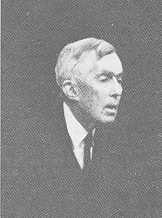 Harrod fue el primero en proponer un gran número de ideas básicas de la teoría económica aunque no fue reconocido como tal en su tiempo. Propuso, en 1931, la forma de la curva de costes medios a largo plazo como una envolvente de las curvas a corto plazo, una idea pionera también fue descubierta independientemente por Jacob Viner. Estableció las bases del análisis de la teoría de la competencia imperfecta que más adelante desarrolló Joan Robinson. Diseñó el modelo del multiplicador-acelerador en 1936, posteriormente formalizados por Samuelson y Hicks. Formuló el modelo IS-LM en 1937. En 1939 publica un análisis del comportamiento empresarial en el que propone un modelo evolutivo de selección natural de los comportamientos de maximización de beneficios, idea que sería recogida y desarrollada por Armen A. Alchian en los años 50.
Harrod fue el primero en proponer un gran número de ideas básicas de la teoría económica aunque no fue reconocido como tal en su tiempo. Propuso, en 1931, la forma de la curva de costes medios a largo plazo como una envolvente de las curvas a corto plazo, una idea pionera también fue descubierta independientemente por Jacob Viner. Estableció las bases del análisis de la teoría de la competencia imperfecta que más adelante desarrolló Joan Robinson. Diseñó el modelo del multiplicador-acelerador en 1936, posteriormente formalizados por Samuelson y Hicks. Formuló el modelo IS-LM en 1937. En 1939 publica un análisis del comportamiento empresarial en el que propone un modelo evolutivo de selección natural de los comportamientos de maximización de beneficios, idea que sería recogida y desarrollada por Armen A. Alchian en los años 50.
Su contribución más popular es el modelo de crecimiento llamado de Harrod-Domar, propuesto inicialmente por él en 1939 y desarrollado posteriormente por Evsey Domar, que sentó las bases de la teoría del crecimiento económico de la postguerra.
Ver, en este mismo sitio web:
La generalización de la macrodinámica: el modelo de Harrod – Domarde Marleny Cardona Acevedo y otros
La generalización de la macrodinámica: el modelo de Harrod – Domarde Marleny Cardona Acevedo y otros
OBRAS
- "Notes on Supply", 1930, EJ.
- "The Law of Decreasing Costs", 1931, EJ.
- International Economics, 1933.
- "Doctrines of Imperfect Competition", 1934, QJE.
- "The Equilibrium of Duopoly", 1934, EJ.
- "The Expansion of Credit in an Advancing Economy", 1934, Economica
- The Trade Cycle: an essay, 1936.
- "Mr. Keynes and Traditional Theory", 1937, Econometrica.
- "Price and Cost in Entrepreneurs' Policy", 1939, Oxford EP.
- "Essay in Dynamic Theory", 1939, EJ
- A Page of British Folly, 194?
- Towards a Dynamic Economics, 1948.
- The Life of John Maynard Keynes, 1951.
- Economic Essays, 1952.
- Foundations of Inductive Logic, 1956.
- "Professor Fellner on Growth and Unemployment", 1957, Kyklos
- "Factor Price Relations Under Free Trade", 1958, EJ.
- "Domar and Dynamic Economics", 1959, EJ
- "Second Essay on Dynamic Theory", 1960, EJ.
- "Themes in Dynamic Theory", 1963, EJ.
- The British Economy, 1963.
- "Retrospect on Keynes", 1963, in Lekachman, editor, Keynes's General Theory.
- Reforming the World's Money, 1965.
- Dollar-Sterling Collaboration, 1968.
- Money, 1969.
- Economic Dynamics, 1975
Michal Kalecki ( 1899-1970 )
Economista polaco. Al parecer, gran parte de los principios que estableció Keynes en 1936 habían sido ya avanzados y publicados anteriormente por Kalecki... en polaco.
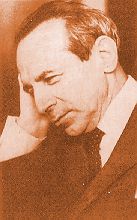 En los años 30, sin embargo, es reconocido mundialmente. Sus publicaciones más conocidas tratan de los ciclos económicos. Fue también un pionero en el análisis matemático de la dinámica económica. Utiliza ampliamente conceptos clásicos y marxistas, interesándose por los conflictos de clase, la distribución de la renta y la competición imperfecta.
En los años 30, sin embargo, es reconocido mundialmente. Sus publicaciones más conocidas tratan de los ciclos económicos. Fue también un pionero en el análisis matemático de la dinámica económica. Utiliza ampliamente conceptos clásicos y marxistas, interesándose por los conflictos de clase, la distribución de la renta y la competición imperfecta.
Estas ideas tuvieron influencia y reconocimiento en la keynesiana escuela de Cambridge (especialmente entre sus miembros más próximos al marxismo como J. Robinson yN. Kaldor) y entre los economistas post-keynesianos.
Ver también
OBRAS
- "Mr Keynes's Predictions", 1932, Przeglad Socjialistyczny.
- An Essay on the Theory of the Business Cycle, 1933.
- "Essai d'une theorie du mouvement cyclique des affaires", 1935, Revue d'economie politique.
- "A Macrodynamic Theory of Business Cycles", 1935, Econometrica.
- "The Mechanism of Business Upswing", 1935, Polska Gospodarcza.
- "Some Remarks on Keynes's Theory", 1936, Ekonomista.
- "A Theory of the Business Cycle", 1937, RES.
- "A Theory of Commodity, Income and Capital Taxation", 1937, EJ.
- "The Principle of Increasing Risk", 1937, Economica.
- "The Determinants of Distribution of the National Income", 1938, Econometrica.
- Essays in the Theory of Economic Fluctuations, 1939.
- "A Theory of Profits", 1942, EJ.
- Studies in Economic Dynamics, 1943.
- "Political Aspects of Full Employment", 1943, Political Quarterly.
- "Professor Pigou on the Classical Stationary State", 1944, EJ.
- "Three Ways to Full Employment", 1944 in Economics of Full Employment.
- "A Note on Long Run Unemployment", 1950, RES.
- Theory of Economic Dynamics: An essay on cyclical and long- run changes in capitalist economy, 1954.
- "Observations on the Theory of Growth", 1962, EJ.
- Studies in the Theory of Business Cycles, 1933-1939, 1966.
- "The Problem of Effective Demand with Tugan-Baranovski and Rosa Luxemburg", 1967, Ekonomista.
- "The Marxian Equations of Reproduction and Modern Economics", 1968, Social Science Information.
- "Trend and the Business Cycle", 1968, EJ.
- "Class Struggle and the Distribution of National Income", 1971, Kyklos.
- Selected Essays on the Dynamics of the Capitalist Economy, 1933-1970, 1971.
- Selected Essays on the Economic Growth of the Socialist and the Mixed Economy, 1972.
- The Last Phase in the Transformation of Capitalism, 1972.
- Essays on Developing Economies, 1976
Walter Kurt Heinrich Eucken ( 1891-1950 )
Economista alemán, estudió en las universidades de Kiel, Jena y Bonn. Es profesor de Economía Política en las universidades de Berlín, Tubinga y Friburgo. Admirador de Böhn-Bawerk, defiende las ideas de los economistas de la escuela austriaca frente a los historicistas alemanes.
Preocupado por los problemas metodológicos, se muestra partidario de la investigación teórica abstracta.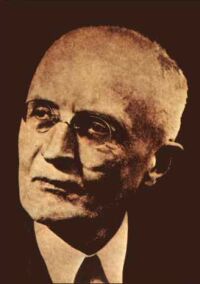

En el campo de los sistemas económicos propone una clasificación original. Distingue dos grandes tipos de sistemas: los de dirección central y los de tráfico. Dentro de los primeros distingue los de dirección central total, dirección central con libre intercambio de bienes de consumo, dirección central con libre elección de consumo y dirección central con libre elección de oficio y puesto de trabajo.
Analiza también los diversos tipos de mercado y establece una clasificación de veinticinco tipos, según la oferta y la demanda respondan a las cinco modalidades básicas: monopolio, monopolio parcial, oligopolio, oligopolio parcial y competencia perfecta.
OBRAS
- Kapital theoretische untersuchungen (1934)
- Unser Zeitalter der Misserfolge (1952)
John Maurice Clark ( 1884-1963 )
Nació en Northampton, Massachussets, en noviembre de 1884. Fue hijo de otro importante economista: John Bates Clark. Pero a diferencia de éste, a John Maurice Clark se le asocia con la corriente institucionalista americana.
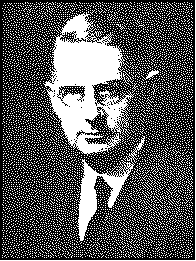 Cursó estudios en la Universidad de Amherst, en Columbia University, donde se doctoró en 1910, y en la Universidad de Chicago. Ejerció enseñanza en las universidades de Colorado, Amherst, Chicago y, durante muchos años, en Columbia University. Fue doctorado honorífico por varias universidades.
Cursó estudios en la Universidad de Amherst, en Columbia University, donde se doctoró en 1910, y en la Universidad de Chicago. Ejerció enseñanza en las universidades de Colorado, Amherst, Chicago y, durante muchos años, en Columbia University. Fue doctorado honorífico por varias universidades.
Éste destacado pre-keynesiano, que se centró en la utilización de modelos dinámicos, dominó varias materias, como la economía industrial y economía del bienestar, y subrayó la importancia de la aplicación de la psicología y ética al análisis económico.
Sin embargo, John Maurice Clark ha pasado a la historia, principalmente, por haber pulido el principio de aceleración, que expuso en su célebre artículo "Business Acceleration and the Law of Demand" (1917), publicado en el Journal of Political Economy.
Falleció en 1963, en Wesport (Connecticut, EE.UU.)
Ver, en este mismo sitio web
John Maurice Clark, La aceleración de la actividad y la ley de la demanda
Currículum Vitae
1905 A.B. Degree Amherts College
1908 - 1910: Instructor en Colorado College
1910. Ph.D. Columbia University
1910 - 1915: Profesor asociado en Amherts College
1915 - 1922: Profesor asociado de Economía Política en University of Chicago
1922 - 1926: Profesor en University of Chicago
1926 - (?): Profesor en Columbia University
1934 - 1935: Consultor del National Recovery Administration
1935 L.H.D. Amherts College
1935: Presidente de American Economics Association (EAE)
1939 - 1940: Consultor del National Resources Planning Board
1940 - 1943: Consultor del Office of Price Administration
1941 LL.D. University of Chicago
1950 - 1951: Miembro del Twentieth Century Fund Committee on Economic Stabilization
Otras actividades: Miembro de la Royal Swedish Academy of Science y de la American Philosophical Society. Presidente de Honor de Internation Economic Association.
1908 - 1910: Instructor en Colorado College
1910. Ph.D. Columbia University
1910 - 1915: Profesor asociado en Amherts College
1915 - 1922: Profesor asociado de Economía Política en University of Chicago
1922 - 1926: Profesor en University of Chicago
1926 - (?): Profesor en Columbia University
1934 - 1935: Consultor del National Recovery Administration
1935 L.H.D. Amherts College
1935: Presidente de American Economics Association (EAE)
1939 - 1940: Consultor del National Resources Planning Board
1940 - 1943: Consultor del Office of Price Administration
1941 LL.D. University of Chicago
1950 - 1951: Miembro del Twentieth Century Fund Committee on Economic Stabilization
Otras actividades: Miembro de la Royal Swedish Academy of Science y de la American Philosophical Society. Presidente de Honor de Internation Economic Association.
OBRAS
- Standards and Reasonableness in Local Freight Discriminations (1910)
- "Rates for Public Utilities" (1911), AER
- "Frontiers of Regulation and What Lies Beyond" (1913), AER
- "Review of Pigou's Wealth and Welfare" (1913), AER
- "Possible Complications of the Compensated Dollar" (1913), AER
- "Some Neglected Phases of Rate Regulation" (1914), AER
- "Business Acceleration and the Law of Demand" (1917), JPE
- "The Basis of War-Time Collectivism" (1917), AER
- "Economic Theory in an Era of Social Readjustment" (1919), AER
- "Soundings in Non-Euclidian Economics" (1921), AER
- (Studies in) the Economics of Overhead Costs (1923)
- Social Control of Business (1926)
- Adam Smith, 1776-1926 (1928), University of Chicago Press; con otros autores.
- The Costs of the World War to the American People (1931)
- "Capital Production and Consumer Taking - A reply" (1931), JPE
- Strategic Factors in Business Cycles (1934)
- The Economics of Planning Public Works (1935)
- Preface to Social Economics (1936)
- "Toward a Concept of Workable Competitition" (1940), AER
- An Alternative to Sefdom (1948)
- Guideposts in Time of Change (1949)
- The Ethical Basis of Economic Freedom (1955)
- Competition as a Dynamic Process (1961)
Wesley Clair Mitchell, 1874-1948
El economista norteamericano Wesley C. Mitchell nació en Rushville, Illinois y estudió en la Universidad de Chicago donde fue alumno de Thorstein Veblen y John Dewey. Obtuvo el doctorado en 1899. Fue profesor en las universidades de California, Columbia y en la New School for Social Research.

Miembro destacado de la Escuela Institucionalista, cuestionó continuamente la economía ortodoxa y se interesó en la psicología behaviorista. Siempre estuvo dispuesto a colaborar en diversos órganos gubernamentales: fue chairman del Comité Asesor del Presidente Roosevelt en Social Trends (1929-1933) y cofundador del National Bureau of Economic Research.
Sus principales aportaciones fueron en el campo de la teoría de los ciclos que enfocó desde un punto de vista empiricista por lo que dio gran importancia a la recopilación de datos estadísticos. Su discípulo más destacado fue Simon Kuznets que continuó la tediosa labor de recopilar datos lo que fue premiado con el Nobel de 1971.
Ver, en este mismo C-ROM o sitio web:
Mitchell, Westley C.: Los ciclos económicos
Mitchell, Westley C.: Los ciclos económicos
Obra
A History of Greenbacks, 1903.
Gold Prices and Wages Under the Greenback Standard, 1908.
"The Backward Art of Spending Money", 1912, AER.
Business Cycles, 1913.
The Making and Uses of Index Numbers, 1915.
"Wieser's Theory of Social Economics", 1915, PSQ.
"The Role of Money in Economic Theory", 1916, AER.
"Bentham's Felicific Calculus", 1918, PSQ.
"Statistics and Government", 1919, JASA.
"Prices and Reconstruction", 1920, AER
"Making Goods and Making Money", 1923, Proceedings de la AEA.
"The Prospects of Economics", 1924, en Tugwell, editor, Trend of Economics.
"Quantitative Analysis in Economic Theory", 1925, AER.
Business Cycles: The problem and its setting, 1927.
"Postulates and Preconceptions of Ricardian Economics", 1929, en Smith and Wright, editores, Essays in Philosophy.
"Sombart's Hochkapitalismus", 1929, QJE.
"Institutes for Research in the Social Sciences", 1930, Proceedings de la Association of American Universities.
"The Social Sciences and National Planning", 1935, Science.
"Commons on Institutional Economics", 1935, AER.
"Intelligence and the Guidance of Economic Evolution", 1936, Scientific Monthly.
"Thorstein Veblen", 1936, en What Veblen Taught.
The Backward Art of Spending Money 1937.
Measuring Business Cycles en colaboración con A.F. Burns, 1946.
What Happens During Business Cycles, 1951.
Lecture Notes on Types of Economic Theory, 2 volúmenes, 1967.
Gold Prices and Wages Under the Greenback Standard, 1908.
"The Backward Art of Spending Money", 1912, AER.
Business Cycles, 1913.
The Making and Uses of Index Numbers, 1915.
"Wieser's Theory of Social Economics", 1915, PSQ.
"The Role of Money in Economic Theory", 1916, AER.
"Bentham's Felicific Calculus", 1918, PSQ.
"Statistics and Government", 1919, JASA.
"Prices and Reconstruction", 1920, AER
"Making Goods and Making Money", 1923, Proceedings de la AEA.
"The Prospects of Economics", 1924, en Tugwell, editor, Trend of Economics.
"Quantitative Analysis in Economic Theory", 1925, AER.
Business Cycles: The problem and its setting, 1927.
"Postulates and Preconceptions of Ricardian Economics", 1929, en Smith and Wright, editores, Essays in Philosophy.
"Sombart's Hochkapitalismus", 1929, QJE.
"Institutes for Research in the Social Sciences", 1930, Proceedings de la Association of American Universities.
"The Social Sciences and National Planning", 1935, Science.
"Commons on Institutional Economics", 1935, AER.
"Intelligence and the Guidance of Economic Evolution", 1936, Scientific Monthly.
"Thorstein Veblen", 1936, en What Veblen Taught.
The Backward Art of Spending Money 1937.
Measuring Business Cycles en colaboración con A.F. Burns, 1946.
What Happens During Business Cycles, 1951.
Lecture Notes on Types of Economic Theory, 2 volúmenes, 1967.
John R. Commons ( 1862-1945 )
John R. Commons ( 1862-1945 )
John R. Commons es un destacado miembro de la escuela institucionalista americana. Nacido en Ohio, USA, fue profesor de economía en las universidades de Wesleyan, Oberlin, Indiana, Syracuse y Wisconsin. Presidente de la American Economic Association.

Su influencia no se debe tanto a sus escritos teóricos como a la legislación que promovió y consiguió hacer aprobar en las cámaras legislativas americanas. Su amistad con Robert LaFollette y otros senadores progresistas impulsó una profunda reforma de la legislación laboral, expecialmente en lo referente a lal condiciones de seguridad e higiene en el puesto de trabajo, seguros de desempleo y programas de seguridad social para la jubilación. ¡Todo esto antes de la primera guerra mundial!
John Commons investigó el papel del Estado y propuso el desarrollo de una "Economía Institucional" como síntesis de la Economía Política, el Derecho y la Ética.
OBRAS
- The Distribution of Wealth (1893, 1968)
- A Documentary History of American Industrial Society , 10 vols (1910-11, 1958)
- History of Labor in the United States , 4 vols (1918-35)
- Legal Foudations of Capitalism (1924, 1959)
- Institutional Economics (1934, 1959)
- Myself (1934, 1963)
- The Economics of Collective Action , ed. K. H. Parsons (1950, 1956).
Richard T. Ely ( 1854-1943 )
Richard T. Ely es considerado a la vez miembro de la Escuela Historicista Alemana y precursor del Institucionalismo Americano. Fue profesor de John R. Commons y Wesley C. Mitchell.
Junto con Seligman, fundó la prestigiosa American Economic Asociation, que actualmente sigue honrando el nombre de su fundador.
Richard T. Ely nació en Ripley, New York, el 13 de abril de 1854. 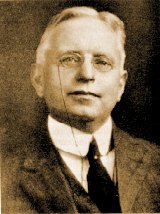 A los 18 años entró en el Dartmouth College y posteriormente se trasladó a la Columbia University donde se graduó en 1876. Obtuvo el título de doctor en la Universidad de Heidelberg, donde recibió la influencia de la Escuela Historicista. En 1881 obtuvo la cátedra de Economía Política en la Johns Hopkins University. Sus enfrentamientos con Newcomb y los marginalistas provocaron su abandono de esta universidad y su traslado ala de Wisconsin.
A los 18 años entró en el Dartmouth College y posteriormente se trasladó a la Columbia University donde se graduó en 1876. Obtuvo el título de doctor en la Universidad de Heidelberg, donde recibió la influencia de la Escuela Historicista. En 1881 obtuvo la cátedra de Economía Política en la Johns Hopkins University. Sus enfrentamientos con Newcomb y los marginalistas provocaron su abandono de esta universidad y su traslado ala de Wisconsin.
 A los 18 años entró en el Dartmouth College y posteriormente se trasladó a la Columbia University donde se graduó en 1876. Obtuvo el título de doctor en la Universidad de Heidelberg, donde recibió la influencia de la Escuela Historicista. En 1881 obtuvo la cátedra de Economía Política en la Johns Hopkins University. Sus enfrentamientos con Newcomb y los marginalistas provocaron su abandono de esta universidad y su traslado ala de Wisconsin.
A los 18 años entró en el Dartmouth College y posteriormente se trasladó a la Columbia University donde se graduó en 1876. Obtuvo el título de doctor en la Universidad de Heidelberg, donde recibió la influencia de la Escuela Historicista. En 1881 obtuvo la cátedra de Economía Política en la Johns Hopkins University. Sus enfrentamientos con Newcomb y los marginalistas provocaron su abandono de esta universidad y su traslado ala de Wisconsin.
Posteriormente se especializó en temas relacionados con la economía del trabajo y el movimiento sindical lo que le provocó nuevos problemas políticos. Al final de su vida académica asumió posturas muy conservadoras y se dedicó al estudio de la economía agraria.
OBRAS
- "American Colleges and German Universities", 1880, Harper's
- "German Cooperative Credit Unions", 1881, Atlantic Monthly
- French and German Socialism in Modern Time, 1883.
- "The Past and the Present of Political Economy", 1883, Overland Monthly.
- "The Prussian Civil Service", 1883, Overland Monthly
- The Past and the Present of Political Economy, 1884
- "Pullman: A Social Study", 1885, Harper's
- "Ethics and Economics", 1886, Science.
- "Arbitration", 1886, North American Review
- The Labor Movement in America, 1886.
- "Social Studies. I. The Nature of the Railway Problem", 1886, Harper's
- "Social Studies - II. The Economic Evils in American Railway Methods", 1886, Harper's
- "Social Studies - III. The Reform of Railway Abuses", 1886, Harper's
- "Socialism in America", 1886, North American Rev.
- "Political Economy in America", 1887, North American Rev.
- "Social Studies. - I. The Nature and Significance of Corporations", 1887, Harper's
- "Social Studies. - II. The Growth of Corporations", 1887, Harper's
- "Social Studies. - III. The Future of Corporations", 1887, Harper's
- Taxation in American States and Cities, 1888.
- An Introduction to Political Economy, 1889.
- "The Telegraph Monopoly", 1889, North American Rev.
- "A Programme for Labor Reform", 1890, Century
- "Pauperism in the United States", 1891, North American Rev.
- "The Inheritance of Property", 1891, North American Rev.
- Outlines of Economics, 1893.
- "Natural Monopolies and the Workingman. A Programme of Social Reform", 1894, North American Review
- "Fraternalism vs. Paternalism in Government", 1898, Century
- Monopolies and Trusts, 1900.
- Studies in the Evolution of Industrial Society, 1903.
- Property and Contract in their Relation to the Distribution of Wealth, 1914.
- Ground Under Our Feet: An autobiography, 1938.
- Natural Monopolies and the Workingman. A Programme of Social Reform
Vilfredo Pareto (1848-1923)
Economista italiano. Estudió en Turín y fue profesor de economía en Lausana, Suiza. Seguidor de Pantaleoni y Walras.
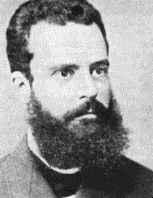
Fue el primer economista en distinguir claramente entre los conceptos de utilidad cardinal y ordinal, y negó la aplicabilidad del primero. Utilizando las curvas de indiferencia, reelaboró la teoría de la utilidad y la demanda. Negando la posibilidad de hacer comparaciones interpersonales de utilidad, definió el concepto conocidos ahora como "óptimo de Pareto". Al estudiar la distribución de la riqueza y las rentas estableció la llamada "Ley de Pareto" según la cual la desigualdad económica es inevitable en cualquier sociedad.
La Economía Política no debe tener en cuenta la moralidad. Pero cualquiera que alabe una medida concreta, debería tener en cuenta no sólo las consecuencias económicas, sino también las consecuencias morales, religiosas, políticas, etc.
(Vilfredo Pareto, Manual de Economía Política, 1906)
(Vilfredo Pareto, Manual de Economía Política, 1906)
Texto en castellano de Vilfredo Pareto contenido en este CD-ROM:
Otras obras de Vilfredo Pareto
- "Considerazioni sui principi fondamentali dell'economia politica pura", 1893, Giornale degli Economisti.
- "Introduction" a los Extracts from Karl Marx's Capital, 1893.
- Leçon d'économie pure à l'Université de Lausanne, 1893(?)
- Cours d'Economie Politique, 2 volúmenes, 1896-7.
- "New Theories of Economics ", 1897, JPE.
- Les Systemes Socialistes, 1901.
- "Review of Aupetit", 1902, Revue d'Economie Politique
- Manual of Political Economy , 1906.
- "L'economie et la sociologie au point de vue scientifique", 1907, Rivista di Scienza.
- Trattato di Sociologia Generale, 1916.
Joan Robinson, 1903-1983
Joan Violet Robinson (de soltera Maurice) pertenece al grupo de economistas más destacados del siglo XX. Líder de la "Cambridge School" fue marshalliana en origen, ardiente keynesiana y, finalmente, una destacada miembro de las escuelas neo-ricardiana y post-keynesiana.
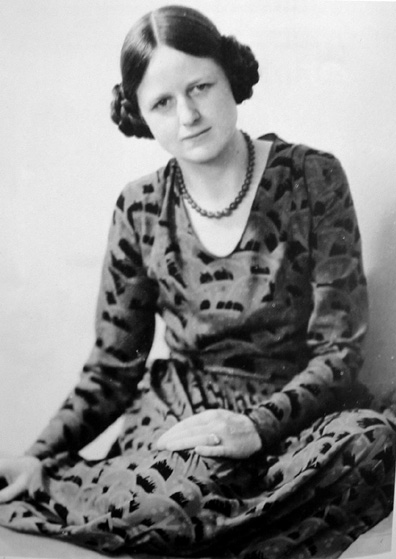
Sus contribuciones a la literatura económica fueron muy numerosas y abordaron múltiples áreas. Joan Robinson introdujo la teoría de la competición imperfecta en su famoso libro de 1933. Después, en 1937, elaboró una fiel exposición de las ideas de Keynes. En 1942 vuelve su atención hacia la teoría marxista. Más tarde concentra su atención en problemas metodológicos.
Estuvo también muy interesada en los problemas del subdesarrollo. En los años setenta sorprendió con sus alabanzas a la "gran revolución cultural" de la China maoísta.
Profesora en la Universidad de Cambridge desde 1931, no llegó a ser catedrática hasta 1965. Nunca le dieron el Premio Nobel lo que ha sido considerado uno de los más tristes e injustos tratos deliberadamente discriminatorios.
Ver, en este mismo sitio web:
La postura postkeynesiana: la edad de oro de Joan Robinson
de Marleny Cardona Acevedo y otros
La postura postkeynesiana: la edad de oro de Joan Robinson
de Marleny Cardona Acevedo y otros
Obras

- Economics is a Serious Subject: The apologies of an economist to the mathematician, the scientist and the plain man, 1932.
- The Economics of Imperfect Competition , 1933
- "Theory of Money and Analysis of Output", 1933, RES.
- "A Parable on Savings and Investment", 1933, Economica.
- "What is Perfect Competition?", 1934, QJE.
- "Euler's Theorem and the Problem of Distribution", 1934, EJ.
- "Disguised Unemployment", 1936, EJ.
- "The Long Period Theory of Employment", 1936, ZfN.
- "Some Reflections on Marxist Economics", 19??, EJ.
- Introduction to the Theory of Employment, 1937
- Essays on the the Theory of Employment, 1937.
- "The Concept of Hoarding", 1938, EJ.
- "Rising Supply Price", 1941, Economica.
- Essay on Marxian Economics , 1942
- "The Economics of Full Employment", 1945, EJ.
- "Obstacles to Full Employment", 1946, Nationalokonomisk Tidskrift.
- "The Pure Theory of International Trade", 1946, RES.
- "Marx and Keynes", 1948, Critica Economica.
- "Mr. Harrod's Dynamics", 1949, EJ.
- "Exchange Equilibrium", 1950, Economia Internazionale.
- "The Rate of Interest", 1951, Econometrica.
- Collected Economic Papers, Vol. I, 1951.
- "The Model of an Expanding Economy", 1952, EJ.
- The Rate of Interest and other essays , 1952.
- "The Generalization of the General Theory", 1952, ???
- "The Production Function and the Theory of Capital", 1953-4, RES.
- The Accumulation of Capital , 1956.
- "Notes on the Theory of Economic Development", 1956, Annales de la Faculte de Liege.
- "India, 1955: Unemployment and planning", 1957, Capital.
- "The Philosophy of Prices", 1958, Manchester School.
- "The Real Wicksell Effect", 1958, EJ.
- "Some Problems of Definition and Measurement of Capital", Oxford EP.
- "Accumulation and the Production Function", 1959, EJ.
- Exercises in Economic Analysis, 1960.
- Collected Economic Papers, Volume II, 1960.
- "La Enseñanza de la Economía", Economic Weekly, 1960
- "General Liquidity", 1960, The Banker.
- "Own Rates of Interest", 1961, EJ.
- "Equilibrium Growth Models", 1961, AER.
- "Prelude to a Critique of Economic Theory", 1961, Oxford EP.
- Essays in the Theory of Economic Growth , 1962.
- "A Neo-Classical Theorem", 1962, RES.
- Economic Philosophy: An essay on the progress of economic thought, 1962.
- "The Basic Theory of Normal Price", 1962, QJE.
- "Solow on the Rate of Return", 1964, EJ.
- "Factor Prices Note Equalized", 1964, QJE.
- "The Final End of Laissez-Faire", 1964, ???
- "Consumer's Sovereignty in a Planned Economy", 1964, Essays in Honor of Oskar Lange.
- "China, 1963: The Communes", 1964, Political Quarterly.
- "Pre-Keynesian Theory After Keynes", 1964, Australian EP.
- Collected Economic Papers, Volume III, 1965.
- "Korea, 1964: Economic miracle", 1965, MLR.
- "Piero Sraffa and the Rate of Exploitation", 1965, New Left Review.
- Economics: An awkward corner, 1966.
- "Comment on Samuelson and Modigliani", 1966, RES.
- "The Badly Behaved Production Function", with K.A. Naqvi, 1967 QJE.
- "Growth and the Theory of Distribution", 1967, Annals of Public and Cooperative Economy.
- "Marginal Productivity", 1967, Indian Economic Review.
- "The Poverty of Nations", 1968, Cambridge Quarterly.
- "The Theory of Value Reconsidered", 1969, Australian EP.
- "A Further Note", 1969, RES.
- "Capital Theory Up to Date", 1970, Canadian JE.
- Freedom and Necessity, 1970.
- "Harrod After 21 Years", 1970, EJ.
- Economic Heresies: Some old-fashioned questions in economic theory, 1971.
- "The Second Crisis of Economic Theory", 1972, AER.
- An Introduction to Modern Economics, with John Eatwell, 1973.
- "Formalistic Marxism and Ecology without Classes", 1973, Journal of Contemporary Asia.
- "Ideology and Analysis", 1973, in Sozialismus, Geschichte und Wirtschaft.
- Collected Economic Papers, Vol. IV, 1973.
- "History versus Equilibrium", 1974, Thames Papers in PE.
- "The Unimportance of Reswitching", 1975, QJE.
- "What Are the Questions?", 1977, JEL.
- "Employment and the Choice of Technique", 1977, Society and Change.
- "The Labour Theory of Value", 1977, MLR.
- Contributions to Modern Economics, 1978.
- "Keynes and Ricardo", 1978, JPKE.
- "Morality and Economics", 1978, Challenge.
- The Generalization of the General Theory and Other Essays, 1979.
- "Kalecki and the Economics of Capitalism", 1977, Oxford Bulletin of Statistics.
- "Thinking About Thinking", 1979,
- "Keynes Today", with F. Cripps, 1979, JPKE.
- Aspects of Development and Underdevelopment, 1979.
- "Garegnani on Effective Demand", 1979, Cambridge JE.
- What Are the Questions? And other essays, 1980.
- Collected Economic Papers, six volumes, 1951-1980.
- "Misunderstandings in the Theory of Production", 1982, in Feiwel, editor, Samuelson and Modern Economics.
- "The Arms Race", 1982, in McMurrin, editor, Tanner Lectures on Human Values.
- "The Economics of Destruction", 1983, MLR.
- "The Theory of Normal Prices and Reconstruction of Price Theory", 1985, in Feiwel, editor, Issues in Contemporary Macroeconomics.
- "Ideology and Logic", with F. Wilkinson, 1985, in Vicarelli, editor, Keynes's Relevance Today
Suscribirse a:
Entradas (Atom)